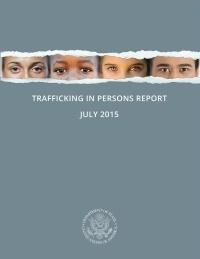Canadian Oil Sands: Lesser of Several Evils?


By Wayne Dunn
The Canadian Oil Sands industry is under global pressures from social and environmental fronts. And this is at a time of plunging global oil prices that are eroding the industry’s financial license.
Foreign governments, markets, NGOs, celebrities and others are actively protesting the operation and expansion of the industry, focused mainly on the carbon cost that is embedded in the energy from carbon-intensive production and processing methods.
It is interesting that these groups are targeting Canadian oil sands production when energy from other areas, like the Middle East, comes with unacceptable levels of human rights, conflict, military and other costs.
Few seem to be doing the calculus that would objectively compare the socio-environmental cost of Canadian oil sands and Middle Eastern energy production. I strongly suspect that it is much easier to address the carbon and environmental impact of the oil sands than it is to address the human rights, conflict and military costs of Middle Eastern energy.
I also suspect that part of the reason that the carbon calculus versus the human rights and conflict calculus isn’t done is (at least partly) because Canadian government ‘support’ and Canada’s emergence as a climate change dawdler has helped to make the oil sands an easy international target.
The industry is in much difficulty, despite, or as a result of, a national government and regulator that has been a strong cheerleader for nearly 10 years. It is facing global activism and opposition and has not been able to get its production to global markets. Pipelines are stalled, and market access looks increasingly difficult.
These are directly related and have created an, at best, very tenuous social license for the industry. The Canadian government, who is also the national regulator, has supported the industry in ways that have undermined its environmental credibility globally.
Recent revelations in the Guardian put more strain on the government’s role as an objective regulator and give fuel to opponent’s arguments.
A robust industry requires technical and economic viability as well as some level of societal acceptance. An industry with international and global markets requires societal acceptance and an industry social license.
While individual projects and companies can, and do, develop their own project- or brand-level social license, many industries also need some level of industry social license.
In order to achieve societal acceptance (social license) industry must be seen to be making a net positive contribution to society and have an acceptable environmental risk and cost. Notice I said ‘be seen to be making a net positive contribution.' Perception is reality.
The oil sands is a carbon-intensive industry, and carbon and climate change are increasingly critical global issues.
In the case of the Canadian Oil Sands, there is a public perception (domestic and global) that the industry is a global environmental bad-boy.
The Canadian government’s support for the industry, including considerable tinkering with environmental regulation, coupled with the carbon-intensive nature of the industry, has given industry critics plenty of ammunition and credibility.
Canada’s increasing laggardness on the global climate change file has further eroded the perceived credibility of our environmental regulatory system, and, as a direct consequence, the trust that the Canadian and global public has in the environmental performance of key industries such as the oil sands.
If Canada wants to see the socio-economic benefits of a socially and environmentally responsible oil-sands industry, it needs to start by rethinking how it is supporting the industry and how it is engaging in the global climate change issue.
It may be counter-intuitive, but more stringent and credible environmental regulations will help the industry rather than hurt it -- and, hopefully, force opponents to do the hard, but important, work of comparing the socio-environmental costs of energy from Canada’s oil sands with energy from the conflict-ridden Middle East.
Oil sands with an environmental impact that can be improved, or Middle Eastern energy with a conflict and human rights impact that is a lot more difficult to deal with?
I suspect that comparison would favor Canada's oil sands and also push them to better address their carbon intensity -- and at the same time take a small bit of fuel from the Middle East tinderbox.
Image credit: Flickr/. Shell
Wayne Dunn is President & Founder, CSR Training Institute and Professor of Practice in Corporate Social Responsibility, McGill University. You can sign up for the CSR Training Institute newsletter here and read more from him here.
Simple Ways Your Business Can Reduce Travel Emissions


By Kayla Matthews
On an individual level, you’ve probably considered the impact you have on the environment. But what about your business? Perhaps you’ve already invested in environmentally friendly office supplies, take the time to recycle and educate your employees on the importance of working with the planet instead of against it. But is there more you can do?
If you have employees who travel regularly for business trips and initiatives, the answer is yes. Keep reading to learn more about how your business can cut down on travel emissions and why it could be beneficial in the long run.
Cutting down on emissions is important and beneficial
While it may not be the first thing you think of when you consider actions that have an impact on the environment, transportation accounts for approximately 40 percent of the America’s fossil fuel-related carbon dioxide emissions, according to a report by the Union of Concerned Scientists. Because CO2 is one of the gasses that is most responsible for climate change, this is a significant figure.
In addition to helping the environment, cutting down on your travel impact could help your business in the following ways:
- It can give you something to share. More than ever before, individuals want to work with companies that work toward a greater good. If you’re concerned about the environment and are publicly taking steps to reduce your impact, it’ll look good to potential customers.
- It could boost employee morale. A 2012 study found that companies that go green are more likely to attract productive employees than non-green counterparts.
- You could receive tax breaks. While the actual benefits vary by state, there are tax breaks and benefits available for businesses that work to lessen their environmental impact. One way to accomplish this is to modify travel practices to reduce emissions.
How to make it happen
It all sounds great, right? You’re ready to attract new business along with the top talent while receiving tax benefits. Where do you start? How do you work to cut down emissions in a practical manner that doesn’t carry negative impacts for your business? It doesn’t have to be a challenge. Here are a few options:
- Rent the right cars. Sometimes business requires travel. There’s no way around it. If you encourage employees to select hybrid and electric cars when possible, you could cut down on the impact of that travel. When multiple employees need to travel to the same location, encourage them to coordinate dates and rent a single car.
- Consider alternatives to air travel. There’s nothing better than the speed of travel that comes with flying, which is why most companies default to air travel as the top choice for sending employees around the world. But planes are known for their negative environmental impacts. Luckily, buses emit 55 to 75 percent less CO2 than airplanes, and trains emit three to seven times less gas than airplanes, according to the study by the Union of Concerned Scientists referenced above. Because buses can travel nearly anywhere domestically and there are more rail options under development daily, you can avoid flying without making travel a hassle.
- Start a daily travel incentive program. Employees are more likely to become interested in your focus on cutting down emissions for business travel if there’s something in it for them. You can start with the daily commute. Create a daily travel incentive program that provides entries for monthly or weekly drawings, depending upon your capabilities. You can reward employees who walk or bike to work, use public transportation, or choose to carpool instead of driving separately.
- Make telecommuting and conferencing a priority. Sometimes it’s possible to avoid business travel altogether, which cuts down on travel emissions completely. Create a telecommuting program and invest in teleconferencing or Web-conferencing technology, so you can eliminate the need to have employees from multiple locations in the same room.
Put a focus on cutting down on travel emissions for your business and get your employees excited about the process. You can lower your business’s impact on the environment, which is a win-win for everyone.
Image credit: Magdeleine/Tomas Laurinavicius
Kayla Matthews is a healthy living writer and blogger who writes for The Huffington Post and The Climate Group. Follow her on Facebook or at ProductivityTheory.com.
Engaging Faith-Based Communities Is Key in Building International Trust


Nigeria is a land of contrasts and conflict. Too often potential allies are mistaken as enemies and, for the nation's more than 184 million people, one key path to survival is distinguishing who, or what, is truly the enemy.
Emblematic of an oil-rich nation burdened with the “resource curse,” Nigeria suffers under a history of rampant corruption and vast inequality in distribution of wealth. As armed conflict, ethnic tensions and social isolation haunt the region, the most dominant killer in Nigeria is malaria.
Malaria is a serious health risk throughout southern Africa, nowhere more so than in Nigeria. In 2010, more people died of the disease than in any other country. With some 300,000 fatalities every year, Nigeria was ground-zero for the global effort to halt and reverse the incidence of malaria by 2015, as defined in the United Nations Millennium Development Goals (MDGs) set in place in 2000.
With the target year for the MDGs unfolding, the progress made over the past 15 years points to success in many key areas, including a 42 percent reduction in global mortality rates from the disease between 2000 and 2012. In Africa, mortality rates from Malaria decreased 49 percent over the same period. But even with large "interventions" from global aid organizations. making headway against the disease remained slow in the beginning, especially in sub-Saharan Africa.
Different metrics of success
According to the World Health Organization (WHO), malaria interventions have saved the lives of 3.3 million people since 2000. Distributing insecticide-treated bed nets in sub-Saharan Africa is credited with saving hundreds of thousands of lives in Nigeria alone.The United Nations claims that “thanks to increased funding, more children are sleeping under insecticide-treated bed nets in sub-Saharan Africa,” and that’s true, but it’s only part of the story.
"Having nets 'in place' and having nets 'used' are two different indicators of success,” wrote Bill Brieger of Johns Hopkins University in his blog Malaria Matters in 2010. "A major weakness of past public health programming has been providing people with technologically sound and useful interventions without taking into full account the social, cultural and behavioral factors that influence acceptance and use of the interventions."
A solution remains latent until it is accepted and used. Large-scale funding of some $600 million over several years from international aid organizations supplied 50 million bed nets in Nigeria, essentially dumping them in communities en-masse. It was soon discovered that only about 18 percent of the population reached by the effort used them as bed nets. They were instead used “for a lot of different purposes,” says Amy Goldman, CEO of the GHR Foundation, a private family grant-making organization focused on entrepreneurial, action-oriented, faith-based solutions for health, education and global development issues.
"There wasn't attention paid to how to change people's behavior around using them," says Goldman. "They could be [used as] fishing nets or bridal gowns or, because they’re given away for free, considered worthless. Beyond that there was [a perception of] nefarious intentions behind the distribution. So, a lot of suspicion because something comes and is just dropped on a community.”
Appeals for increased and sustained funding from international agencies such as WHO target the "supply side" of malaria intervention, but the reality on the ground challenges conventional models of global aid, says Goldman. In a nation beleaguered by strife, overcoming endemic suspicion and mistrust requires a more creative approach to augment the sheer scale of funding. For Goldman, this means tapping into the resources of local communities, enabling them to “intervene” on their own behalf.
A sweet spot for social change
Instead of focusing on large-scale funding, the GHR Foundation looks for partners that don't necessarily need a huge infusion of cash, but a new perspective on problem solving.
"One of our sweet spots in grant-making is that we look at where we can add-on in terms of our funding into more significant funders or more significant projects," Goldman says. "We're often not the largest funder in the pipes, but we can come in and add a creative element."It's because of that approach to our grant-making that we really consider ourselves entrepreneurial. We come from a business background so that's really what's in our DNA. The entrepreneurial piece is looking for those opportunities where we can be nimble and not as beholden to whatever the interest might be, whether it's shareholders or policymakers."
This sounds good, but what does it really mean? What aspect of a challenge can a relatively small funder change? How can this approach intersect with global development to more effectively engage with the communities they seek to help? As with most things, it starts with common sense. Shared ground. Trust.
"We're living in a world of high distrust right now," says Jeffrey Sachs, director of the Earth Institute at Columbia University and special U.N. advisor on the MDGs, in an online video interview. That distrust is seen repeatedly on the international stage as developed and developing nations grapple with issues of governance, climate change and sustainable growth, spilling over into the simple use of bed nets to protect an at-risk population from malaria.
(Dis)trust is a two-way street
Distrust in how best to strategize global development aid works in both directions. Engaging faith-based organizations has historically been met with skepticism from secular aid organizations. "Many potential donors are wary of engagement due to a lack of familiarity with religious leaders, hierarchies and multi-religious institutions -- not least because they fear getting sucked into proselytization," writes J Andreas Hipple, senior GHR Foundation program advisor, in the Interfaith Observer. "Inter-religious organizations and leaders can help donors overcome these challenges by active engagement as cultural brokers and guides."
But that skepticism is changing. The trend, writes Hipple, is that "faith matters."
"The importance and influence of faith leaders is more widely accepted in the international development field than ever before," says Hipple, "including by many funders in highly secular governments and agencies."
Growing awareness and acceptance of the potential of engaging faith-based groups does not guarantee action or positive results. In a paper submitted to the journal Development in Practice, Dr. Rick James writes: "This positive shift needs careful consideration. Faith can be a powerful, but flammable fuel for change."
"Faith has always had an intense, but uneasy relationship with development," James writes. "For decades religion has been subject to ‘long-term and systematic neglect’ by donors, despite the fact that faith-based organizations (FBOs) historically were at the forefront of service delivery and social movements. Many saw faith as something divisive and regressive – a development ‘taboo’ according to ver Beek (2000)."
In fact, according to James, the horrific events of 9/11 became a "tipping point" for donor engagement with faith-based organizations. The images of that day and its aftermath seared into the consciousness of international communities the power of religion to motivate extreme action.
"Faith was clearly a powerful motivating force, for good or evil. The previous strategy of ignoring faith as irrelevant in aid was defunct," James writes.
Faith, hope, meaning and purpose
Despite the ambivalent and uneasy relationship between FBOs and development aid, and the violence and bloodshed spawned through religious fervor, reaching communities in desperate need require more than money or material intervention, as important as that is, but also a sense of "hope, meaning and purpose."
"Hope is the antidote to the fear, powerlessness, (and) dependence that is at the root of many development challenges today," James writes.
In a New York Times oped published in 2009, entitled As an atheist I truly believe Africa needs God, Matthew Paris speaks of faith as the fundamental solution to Africa's biggest problem, what he calls the "crushing passivity of the people's mindset." But even if international development donors understand the efficacy of engaging with faith-based communities, navigating the complex world of faith is a challenge. Even with all these challenges, as Hipple, James and Paris attest, evidence shows that engaging faith communities is a path to real change, to achieving goals. When it's done right.
Nigeria is a country invaded by terror, by international corporations exploiting natural resources, siphoning off that wealth to a crony few, and to what is often perceived as the dictates of the developed world. Overcoming mistrust and resistance in accepting an effective and increasingly available solution to malaria, or a host of other problems, isn't going to happen in Washington or the capitals of Europe.
It starts with what Goldman calls a "common-sense" understanding that involving religious leaders in communities on the ground will deliver better outcomes.
Data supports common sense
We have likely all thought to ourselves "well, that's just common sense," after hearing reports of a new scientific study confirming what seems "obvious" (for instance, that children do better in families than in large institutional orphanages). But as any successful entrepreneur knows, it takes more than a hunch to succeed. It takes data and evidence that your hunch is actually viable.
A recent article published in the journal Lancet describes the data and evidence-based connection between engaging faith-based communities and improved health: "The sharpening focus on global health and the growing recognition of the capacities and scope of faith-based groups for improving community health outcomes suggest an intentional and systematic approach to forging strong, sustained partnerships between public sector agencies and faith-based organizations," write authors Jean F. Duff and Warren W. Buckingham III. "Converging global health trends, economic realities, and changing development approaches argue for closer partnership between faith and governmental groups in support of the Millennium Development Goals and forthcoming Sustainable Development Goals."
"We're very excited about that," Goldman says. "This is probably six to seven years of our work with our partners: actually funding projects and looking at where there are pockets of funding ... or policy where we can start to really use some of this evidence and data ... and getting the broader message out there about involving either faith-based organizations or faith leaders and communities on the ground."
The work of getting this message out and putting it into action is a perfect fit for Goldman, an expert in diplomacy, political economy, social investment and organizational governance.
"I probably spend more time in Washington, D.C. than I should," says Goldman, "because the the U.S. government and U.S. policymakers are one key set of people with whom we want to use the evidence from the grants we make with our partners and other foundations that we collaborate with, and also globally with other partners ... "
Goldman's experience equips the grant-making efforts of GHR to navigate the intricacies of government policymaking and effective international collaboration, even in a world of "high distrust."
The roadmap of engagement: Training the trainers
Seeking a data-based, common-sense, creative approach to malaria intervention begins with simply understanding the social structure of local communities.
"In the context of Nigeria, as is the case in so many countries all over the world, it is a very faith-based country at the community level," Goldman says. "Data shows that roughly 98 percent of Nigerians affiliate within their faith communities, most predominantly Islam and Christianity".
"So, first of all you look at where people go to get their community messaging and support, and it's from their pastors and their imams."
So, it is with pastors, imams and other faith leaders that rests the task of guiding their followers on the nature of malaria and the value of using bed nets. GHR works with the Center for Interfaith Action (CIFA), a global interfaith network committed to advancing "common action among the world’s religious communities for peace," to help faith and community leaders in towns and villages throughout Nigeria spread knowledge through a "train the trainer" model of education. Local leaders have access to a toolkit of resources, including gatherings to learn and discuss the importance of malaria prevention and instruction, for both Christian and Islamic communities, and how to speak to the issue in their daily spiritual teaching.
As faith leaders speak to the benefit of using bed nets within their religious gatherings, workers at the community level reinforce the message, linking the bed nets to a decrease in malaria.
"So, the intervention of having trusted leaders at a community level say, 'I know these bed nets will actually help decrease malaria, which is killing our children -- and our adults,'" says Goldman.
Grassroots, grasstops
Pastors and imams depend on trust as the currency of their influence and the foundation of their work as leaders and spiritual teachers. Just as with the bed nets, training models and toolkits are of little use if there is no process for building trust within the larger religious infrastructure. If training the trainers is the roadmap for spreading knowledge, how can that knowledge be trusted by Nigeria's faith leaders?
"We talk about grassroots and also 'grasstops,'" says Goldman, "and [seeking] influence and leadership in any context we're working."
Trust moves "up the ladder" from local communities to state and national interfaith leaders throughout Nigeria. GHR and CIFA work with state and national religious councils throughout the country, such as the Nigerian Inter-Faith Action Association (NIFAA), involving national faith leaders "in getting this training disseminated," Goldman says, and "having it be trusted."
"It wasn't GHR and our partner CIFA coming in and saying this. It was through the inner religious council of leadership across a diverse group of religions."
This work of trust-building and education throughout the social structure works where simply providing large quantities of bed nets failed. Data shows that within faith communities (a large share of the population), behaviors and attitudes have have changed, leading to an 85 percent increase in the proper use of bed nets.
"It's the training; it's the looking at the social cohesion; it's the actual focus on the science and the truth of what's happening with the disease," Goldman says.
Social cohesion: Building peace
"The Christian is not our enemy, the mosquito is"As deadly as the disease is, malaria can be vanquished. Through trust-building, education, using bed nets and now the possibility of a malaria vaccine, many lives are saved. But perhaps the most important element of interfaith action is the potential to open dialog, spread understanding and overcome hate.
"... We have been very supportive of strengthening or forming inter-religious councils across many countries," says Goldman, "because we see that as a way to better outcomes."
Can those better outcomes impact the inter-religious warfare afflicting so many parts of the world?
"From the very beginning [that] was our real hope for Africa and across so many of our grant programs." Goldman says.
For an entrepreneurial, data-driven grant-maker like GHR, it is a long road yet before this vision is fully quantified and realized. But for Goldman and her colleagues, it is ultimately the road to peace.
"Now it's really easy for me to be able to talk to you about Nigeria and malaria because we have statistics on increased usage of bed nets," Goldman says. "But we don't have statistics yet to really see if having better outcomes in health, child marriage or integrating children with stronger families will also lead to -- we use the term social cohesion -- but essentially peace. We think of this as essentially peace-building."
It will take a "lot more years under our belt," Goldman says, to learn how to measure and evaluate the process of peace-building. "We're finding and working with those who are really on the forefront of how to measure peace-building efforts."
As progress is assessed for achieving the Millennium Development Goals of reversing malaria, ending poverty, and building a more just and sustainable world, this remains the focus of the grant-making efforts of the GHR Foundation and its partners across the globe. Perhaps the biggest lesson informing adoption of the Sustainable Development Goals is that little gets done without trust, cooperation and the willingness to see that there truly is more that unites us than divides us.
It is impossible to deny the violence splashed across news headlines and throughout history, so much of it in the name of religious extremism and intolerance. As devastating as the mosquito's bite can be, spreading the killer disease of malaria, it serves also as a lesson for us all. A unifying force that can bring bitter enemies together in common cause for a better world: one pastor, one imam and one community at a time.
Image credits: World Bank Photo Collection, BBC World Service, all courtesy Flickr
What the State Department’s Human Trafficking Report Means for Business Supply Chains


By Kilian Moote
This year, the State Department’s Trafficking in Persons Report (TIP Report) had the opportunity to send a strong message to the private sector about combating human trafficking: Forced labor happens in your supply chains, and the U.S. federal government is paying attention. With this issue as the report’s central theme, the goal was to further the conversation with both companies and governments on effective solutions.
Although the relationship between the global marketplace and forced labor did, in fact, dominate the news last week, it was not a conversation about the private sector’s inclusion. Rather, the headlines were dominated by the State Department’s upgrade of Malaysia from the lowest ranking in the report, despite numerous reports of abuse and little action by its government. Many believe this controversial move was made to ensure that Malaysia remains a part of the Trans-Pacific Partnership (TPP) currently being negotiated by the White House.
The political discourse that followed has overshadowed the TIP office’s attempt to call on companies to pay attention to the issue of forced labor in supply chains. The report dedicates more than 20 pages to the issue -- covering important themes like exploitative recruitment tactics, supply chain transparency and market dynamics that contribute to human trafficking.
Supply chains are complicated and opaque, with egregious labor abuses occurring deep within production sub-tiers. The International Labor Organization estimates that forced labor in the private economy generates $150 billion in illegal profits per year. There is no silver-bullet solution, and addressing the issue is a daunting task.
An effective approach prioritizes the protection of vulnerable workers, while taking into account the business dynamics of a given industry. The TIP Report includes a great example of this approach when it mentions the Coalition of Immokalee Workers’ Fair Food Program (FFP). This worker-centered approach brings farm workers, tomato growers, commodity buyers and retailers together to address the labor abuses that at one point seemed inherent to the industry.
The Fair Food Program includes a strict code of conduct and a payment increase. The costs of improvements are distributed across the production value chain so that no one entity is overburdened. The United Nations Working Group on Business and Human Rights called the FFP model a “smart mix of tools” that “serves as a model elsewhere in the world.”
The tomato industry is not the only one that relies heavily on low-skilled, migrant labor — a community particularly vulnerable to human trafficking and forced labor. Exploitation of migrant laborers can be found in many of the industries that harvest our food, manufacture our clothes, assemble our electronics and operate your neighborhood nail salon. Today, if migrant laborers were their own country, they’d be the fifth largest by population in the world.
The TIP Report highlights the urgent need to protect migrant workers who often lack adequate protections. Corporations should be concerned about the exploitative recruitment practices that take place within their supply chains. Migrant workers are often charged exorbitant recruitment fees with predatory interest rates that essentially trap them into their employment. The travel documents of migrant workers are often confiscated and retained, further limiting their ability to leave.
In Thailand, the Guardian has been documenting these practices since their investigation uncovered labor abuses in the Thai seafood industry, where migrant workers are routinely enslaved on fishing vessels. The paper's report, which linked these practices to Western retailers purchasing tainted goods, came out alongside a 2014 TIP Report downgrade for Thailand — where the country appropriately remains today. Forward-leaning companies understand the impact this can have on their business, and some have begun to reimburse workers for the fees they were forced to pay or are now hiring their workforce directly where feasible.
Yet for all this attention to supply chains, the State Department was willing to ignore the very facts its own report was drawing attention to. The TIP Report was in fact accurate in its description of the supply chain human trafficking risks, but the department's actions contradicted its own words. Not only did the department reward undeserving behavior, but its actions could, in fact, exacerbate pre-existing problems.
For example, the upgrade of Malaysia ensures the country's inclusion in the TPP trade deal, which in return will make it easier for Malaysian commodity producers to compete with each other in the global market. These producers, which operate largely with impunity and have already been called out for exploitative labor practices in the palm oil industry, may embrace cost reduction tactics in order to compete for more business. Undoubtedly, some of these suppliers might turn to exploitative tactics to reduce wages and cut costs.
Corporations compete on the basis of their supply chains, and it’s important to understand how changes in the global market landscape can increase one’s supply chain liability. However, a more complicated supply chain does not absolve a company’s responsibility to protect basic human rights. Companies are beginning to realize that technology can disrupt the market for people. The same technology that allows us to send instant messages across the globe can be used to communicate directly with workers, and the technology changing how wireless funds are tracked could be used to ensure workers receive payment.
For 14 years, the TIP Report has been a call-to-action for international governments, and while their responsiveness remains key, the inclusion of the private sector this year is a welcome addition. The private sector should pay attention to the State Department’s call for action, but if the State Department wants companies to prioritize addressing forced labor it must lead by example by giving an honest and fair assessment of each country without regard for competing interests. Prioritizing politics over protecting people reinforces the wrong message and leaves the private sector without a credible and necessary partner in this fight.
Kilian Moote is Project Director of KnowTheChain and an expert on supply chain transparency and legal disclosure. Previously, he conceptualized and led Free2Work, a risk assessment and evaluation tool, created with the U.S. State Department, focused on promoting transparency in supply chains. In the past, Kilian has served as an adjunct faculty member on corporate social responsibility and sustainable supply chain management at the University of San Francisco and has lectured at the University of Technology, Sydney.
Image credit: United States State Department
Would You Wear a Pair of 100 Percent Recyclable Sneakers?


We love our athletic shoes, sneakers, tennis shoes or whatever your preference is in describing them. Long ago barely functional and, quite frankly, dowdy and frumpy sneakers have evolved into sophisticated products. Companies from Nike to Brooks to Adidias have turned the athletic shoe industry into what is now an approximate $80 billion dollar market. And why wouldn’t we wear them? They perform better now than ever, use the latest in cutting-edge in technology, and for those of us who just wear them for looks, they often make for that perfect fashion accessory.
But there is a downside to the ongoing surge in athletic shoe sales when it comes to the environmental front. Depending on the model, the average athletic shoe can use up to 65 different parts and incorporate as many as 360 different manufacturing processes — which are why the athletic-shoe industry’s supply chain is almost as long-winded and complex as that of electronic gadgets. For the carbon bean counters, the complicated manufacturing journey athletic shoes endure account for their high carbon footprint. More companies, such as Nike, have acknowledged the products’ environmental footprint and are taking steps to address these challenges. Nevertheless, the industry has a long ways to go.
Enter Ammo Liao, a designer based in the U.K., who has re-imagined the sneaker, and in doing so, created a shoe that looks pretty sweet as well.
Liao has designed the Bio-Knit shoe, which eschews the multi-faceted approach taken toward the manufacturing of sneakers as he only uses one material. For both the upper and the sole, Liao uses the exact same composite. The upper is derived from a knitted material, which avoids using bolts of fabric, much of which goes to waste on the cutting-room floor. The knit is heated, pressed and engraved by laser, all of which contributes to the material's strength. Liao created the sole using a 3-D printer. The result is a shoe that can be recycled along with plastic water bottles once it is no longer needed. Liao claims this process, which he calls “textile biomimicry,” can be applied to other products, too, including luggage and bicycle helmets.
The end result is a chic looking product: Unlike another famous one-composite shoe (Crocs), they actually look good. The question, however, is whether his concept can scale and be picked up by any of the large manufacturers in the market.
One reason why the manufacture of athletic shoes has become such a byzantine process is that consumers, and not just professional athletes, demand high performance and are often willing to pay for it. Fast fashion has not helped either, as the large global apparel chains churn out goods as quickly and cheaply as possible. Suppliers are often willing to manufacture quickly and cost-effectively — and often outsource components and functions such as stitching and gluing if it means those orders are met on time.
Nevertheless, Liao has given us a rethink about how we could make shoes — and if his idea can go from project to production and, ideally, recycling -- a transformation of the shoe industry is not impossible.
Image credit: Ammo Liao
Starting A Company Without Previous Education: Pros And Cons


By John Stone
There are plenty of successful entrepreneurs who didn’t receive college degrees, from Ben Franklin and Abraham Lincoln to Steve Jobs and Mark Zuckerberg. On the other hand, statistics say that only 1 in 4 entrepreneurs didn’t have a college degree at the time they started their business.
The famous entrepreneurs mentioned above are the biggest proof that running a successful business without a college degree is possible. But like any other important decision, this one also comes with its own set of pros and cons.
Pros
Building up experience: In some businesses, experience is more valued than knowledge gained at school. If a graduate decides to launch a startup instead of applying for a college or university he or she will build up professional experience instead of sitting in class and learning about running a business in theory. The real thing is always better, and if by any chance an entrepreneurship project starts with an upswing and becomes profitable during the first few years of work, stopping it in order to get a formal education would make it lose its precious momentum.Saving money for business investments: Colleges are another form of business, and the tuition fees and other kinds of expenses tied to them can cost students a lot of money. Many freshmen decide to take out student loans, which they still pay several years after they graduate. Investing all of this money into a startup business can make it much more profitable.
Courses are much less expensive and time consuming: Today there are plenty of different courses that offer college-like education and more intense studying programs. The education that these programs provide can be a great addition to the large experience that one college-skipping entrepreneur is able to build up during three years of hard work. This makes him or her a much more desirable candidate for various posts and positions than recent graduates. There are plenty of different courses available, and one that could be very useful for running a startup business is a bsb50415 Diploma of Business Administration.
Cons
Colleges and universities are great for networking: Except being the ultimate places to find quality education, these institutions are also great for creating connections with the experts from the industry. In addition to regular classes, students also attend different kinds of college events where they can meet lots of people and establish very valuable relationships. There are also student organizations that provide free seminars, foreign exchange and lot of great opportunities to learn and socialize.Lots of colleges invest in their students' entrepreneurship projects: It is really hard to get this kind of backing, but if the project has potential, some colleges will definitely back it up with their investment money. A great thing about these institutions is that they also provide free consultations with professors that are usually very high up in the business hierarchy, and their advice is very valuable. The only bad thing about this is that students then need to run their business and finish their university at the same time, which can be exhausting.
It provides status: Studying provides titles and a certain status that only graduates can enjoy. Lots of businessmen evaluate people by the college or university they finished, and although this is very wrong and proves nothing it still happens often in the business world. Although this kind of status is important, applying for a college or university just to get the diploma is definitely the wrong approach.
The bottom line
“Knowledge is power," but college is not the only place where people can get it. Before deciding on this matter, young people should take into consideration all of the important parameters and consult entrepreneurs both with and without college degrees.
Image credits: 1) Flickr/Roel Wijnants 2) Flickr/Alex
John J. Stone spent is a regular contributor at Bizzmarkblog. Always on the move and keeping up with the latest developments in technology, through years of experience he became a devout believer in the notion that form should always follow function and that developing the ability to think outside of the box is a prerequisite of being a successful entrepreneur. In his spare time he enjoys playing guitar.
Why Your Sustainability Strategy Can Be Pivotal to Employee Engagement


By Elisabeth Comere
The business case for implementing sustainable practices is clear, and regardless of what industry you’re in, the strain on natural resources is rising as a result of population growth and climate change. Today, many companies are shifting to a sustainable business model to protect the ecosystem, realize associated cost-savings and support future business growth because a healthier, more vibrant society makes for a healthy economy. To achieve this vision, a business cannot only adopt purpose into its operations, opportunities, solutions and profit, but the notion of purpose must be embedded within its culture.
According to the Deloitte 2014 Core Beliefs and Culture Survey and Punit Renjen, former U.S. chairman (2011-2015) and Deloitte Global CEO, an organization’s culture of purpose answers the critical questions of who it is and why it exists through a set of carefully articulated core beliefs which go beyond making a profit.
“It guides behavior, influences strategy, transcends leaders–and endures,” Renjen says. The study suggests a company committed to creating meaningful impact for employees fosters a strong culture of purpose. For instance, at Tetra Pak, we have a vision to “Protect What’s Good” -- a promise to not only focus on what we do, but the way we do it. Our priorities center on helping brands provide food that is safe and accessible while protecting the future health of the environment through our commitment to using responsibly-sourced materials and renewable resources, reducing our carbon footprint, and ensuring our packages are being recycled at the post-consumer stage. For our employees, “protecting what’s good” is a rallying point for building a culture of purpose in our company.
A sense of purpose inspires confidence among employees which can translate into increased productivity, improved retention and decreased costs from reduced turnover rates. The focus on attracting and retaining quality workers has sharpened in recent years for a few good reasons. Online channels are connecting new career opportunities with eager job-hunters like never before, and the desire to do meaningful work is rising higher on the list of what job-seekers are looking for. Also on that list are those companies that value open communication, collaboration and innovation for creating a more resilient supply chain. These factors contribute to attracting and retaining quality staff; fostering trust, respect and support; leading to employee satisfaction.
A 2013 Deloitte study, Culture of purpose: A business imperative, found that two-thirds of the employees and executives surveyed agreed that businesses weren’t doing enough to instill a sense of purpose aimed at creating meaningful impact. This is often overlooked when companies discuss the merits of embedding sustainability at the heart of their business strategy and so is employee engagement. Employee engagement can be a rich resource for innovation, and when used with integrity, it can create a culture that motivates staff to move environmental initiatives forward.
Today, more employees have the desire to do meaningful work that has positive social and environmental benefits on society, so this can be an important bargaining chip when attracting new talent, especially millennials. “More than 70 percent of millennials expect their employers to focus on societal or mission-driven problems; 70 percent want to be creative at work,” according to the Deloitte U.S. Leadership 2014 Core Beliefs Culture Survey. They are a value-driven generation making up a large percentage of the workforce and looking for an organization where they can put their fresh new ideas into action. They are generally seeking out companies striving to fulfill a larger purpose through product innovation, community outreach programs and employee development programs. The value of purpose is crucial to this talent pool, and without it they will search for new opportunities that can provide a more fulfilling career.
An employee engagement survey is key to measuring how connected employees feel and discovering how well a company is performing against its promises. We’ve found that conducting these studies on a bi-annual basis not only increases participation, but it also demonstrates their commitment to sharing their opinions.
The benefits of sustainable practices on the health of the environment are well known and increasingly so on the business growth. However, the positive impact it has on driving employee satisfaction across an organization is commonly underrepresented. Sustainable practices feed into an organization’s culture of purpose and it helps develop an environment that embodies engagement, collaboration, open communication and innovation which in turn spurs trust, transparency and long term employee retention.
Image credit: istock/vaeenma
Elisabeth Comere is the director of environment and government affairs at Tetra Pak. She joined the company in 2006 as environment manager for Europe, where she helped define and drive Tetra Pak’s environmental strategy and contributed shaping recycling for cartons in Europe. Since 2010, she has been based in the United States, focusing on advancing the Tetra Pak’s commitment to sustainability in the US and Canada and is involved in various industry and customer packaging and sustainability initiatives. Prior to this, she served as a political adviser to a member of the European Parliament in Brussels, Belgium, and headed the environment department of the Food & Drink Industry group in Europe. She is currently a member of the board for the American Institute for Packaging and the Environment (AMERIPEN) and is vice president for Government Affairs for the Carton Council. For further environmental insights from her, visit www.doingwhatsgood.us.
3p Weekend: 8 Unique Internships That Make Learning Fun


With a busy week behind you and the weekend within reach, there’s no shame in taking things a bit easy on Friday afternoon. With this in mind, every Friday TriplePundit will give you a fun, easy read on a topic you care about. So, take a break from those endless email threads and spend five minutes catching up on the latest trends in sustainability and business.
Internships are vital for any student thinking about their future, but choosing an internship can be tricky. They often range from the dull (think: picking up bagels for the morning meeting) to the downright exploitative (unpaid internships without college credit).
But have no fear, eager employee-in-the-making. With a bit of digging, you can find an internship that provides real work experience -- and a whole lot of fun. Read on for eight offbeat internships that make learning fun.
1. PwC: Travel while making an impact
PwC's summer internships give students a taste of a real work environment, where they can pick up new skills and experiences to help them shape their careers. And through its international development program, Project Belize, interns can also travel outside the U.S. to make a difference.Each year, PwC sends 150 interns -- along with top execs from the company and even retired partners -- to Belize City, Belize, to teach financial literacy to nearly 1,500 students. Throughout the years, Project Belize has become one of the most competitive programs within the firm: Out of the thousands who apply, less than 400 are selected to participate.
For more information on the program, check out our editor-in-chief, Jen Boynton's, interview with PwC's Shannon Schuyler.
2. Nike: Sustainable design and a heap of benefits
As an intern for Nike, don't expect to organize files or grab the boss coffee. As Nike puts it, interns are "vital contributors to the company's relentless pursuit of advancing human potential." Those are pretty big words, but this internship is awesome enough to back them up.
In Nike’s paid internship program, undergraduate and graduate students get a full immersion into the brand and company culture. They interact with company leaders while working on real projects in teams from practically every area of the company, including design, global communications, digital and technology, finance, and supply chain.
As an added perk, interns gain access to Nike’s world-class facilities and employee benefits, including product discounts. With opportunities across the globe, from the Nike World Headquarters, to Europe and China, students with a wanderlust can also use it as a chance to travel.
3. Six Flags: Management experience and free roller-coaster rides
Looking to gain management experience without spending a semester cooped-up in a stuffy basement office? This truly one-of-a-kind internship with Six Flags Great America and Hurricane Harbor may be just the ticket.
In this paid program, interns gain experience in staff supervision, as well as training, and they even get to experience what it's like on the other side of the interview table. Interns also receive college credit -- not to mention other perks like subsidized housing, exclusive events with company execs and free theme park access.
4. Doctors Without Borders: Gain experience with a cause you care about
With a paid internship for Doctors Without Borders, students will gain a basic introduction to the field of international medical humanitarian aid and advocacy. Interns will gain valuable experience directly from team members in one of five departments: communications, development, program, human resources and executive. All interns will work out of the organization's headquarters in New York City and must be willing to relocate for the duration of the internship.
5. Smithsonian Institute: Embrace culture with mentor-based learning
Internships with the Smithsonian Institute are learning experiences guided by a mentor, occurring during a specific time frame, which provide "benefits relating to an intern’s education, coursework or career goals." For any intern looking to gain real-life work experience that's in line with their passions, this is the perfect setup.
While the Institute offers internship opportunities in dozens of locations, competition is fierce, so be sure to sign up early.
6. Student Conservation Association: Get outdoors while protecting the environment
The Student Conservation Association offers a wide variety of opportunities for high school graduates, college students and recent college grads. Interns under 21 can apply for its Young Adult Programs, which range from water quality monitoring, forestry and archaeology to communications.
Positions are scattered at national parks across the country, meaning no two experiences are alike. And all include plenty of time in the outdoors.
Interns in the Young Adult category receive housing and a weekly stipend. Applicants over 21 with relevant outdoor experience can also apply for a Field Leader position: short- and long-term paid roles leading youth or young adults in SCA conservation crews and projects.
7. MillerCoors: Beer tasting and a shot at full-time employment
Want to take your love of beer to the next level? Look no further than this 12-week internship with MillerCoors. Interns meet regularly with company leadership and work on real projects that are important to company growth.
They'll also have plenty of fun along the way, with beer tastings and special events. Interns also lead committees with a budget to help plan additional service, sports and social activities. Through the company's unique Brew Crew Intern Network, students can also network with MillerCoors employees at various levels across divisions.
8. NASA: Prepare for your childhood dream
Did you grow up dreaming of being an astronaut? Get a bit closer to making it a reality with an internship with the NASA Goddard Space Flight Center. The center’s internship opportunities are designed to provide high school, undergraduate and graduate students with experiences that "motivate and prepare them for careers aligned with Goddard and its industry and university partners," NASA said.
Interns will learn about science, engineering, business, communications or education alongside real NASA employees and even take trips to enrich the experience. As you may expect, NASA's internships are highly competitive, so be sure to plan ahead.
Image credit: Flickr/NASA Goddard Space Flight Center
Ford Survey Finds EV Owners Highly Satisfied


While there are still clearly many skeptics out there who doubt that electric vehicles will catch on with mainstream motorists, a recent survey by Ford Motor Co. proves that existing owners of electrified vehicles are nonetheless overwhelmingly pleased with their choices.
Ford's survey, conducted in conjunction with EV research entity PlugInsights, found that 92 percent of battery electric vehicle (BEV) owners and 94 percent of plug-in hybrid-electric vehicle (PHEV) owners plan to purchase another electric vehicle in the future. Clearly drivers that have made the switch to electrified vehicles love them, and in most cases, any limitations such as BEV range-anxiety have not proved to be sufficiently troublesome that owners feel inclined to revert to a gasoline-only vehicle.
I spoke to Ford's manger of electric vehicle and technology deployment, Stephanie Janczak, about the survey, and she told me one of the reasons the automaker conducted it was to find out how to get people into an electric vehicle in the first place, as well as gain an understanding of the needs and aspirations of EV drivers.
This is important to Ford, as it currently offers both a pure electric version of its Focus hatchback, as well as plug-in hybrid versions of its Fusion end C-Max models. Although the company could have simply surveyed its existing customer base, by partnering with PlugInsights, it was able to reach a panel of 10,000 EV motorists who drive cars from multiple manufacturers. This allowed Ford to survey a much larger sample size than it would have been able to get from just its own customers -- not to mention gain a greater understanding of EV driver habits across a wider range of vehicle brands. So, what did the company discover?
As well as discovering EV owners are a devoted bunch, Ford found that EVs are perhaps no longer just viewed as "the second car" in the family. So, while it's true that most electric vehicle drivers currently have a gasoline-only car in the family, 73 percent of respondents said that they would probably replace that gasoline-only vehicle with another BEV or PHEV vehicle when it came time for replacement.
Additionally, the survey found a strong correlation between EV ownership and the adoption of solar power by households. Eighty-three percent of electric vehicle drivers will consider, or have already installed, solar panels to charge their vehicles at home. Ford's Janczak told me that although the decisions to install solar and to get an electric vehicle are separate, many drivers end up doing both for environmental reasons and to save on energy costs.
Interestingly though, the use of home fast-chargers is not as widespread as might be expected. Almost half of plug-in hybrid electric vehicle drivers and over a quarter of battery electric vehicle drivers are still using conventional 120-volt outlets at home; that's despite the finding that 88 percent of EV drivers actually want home fast-charging. I asked Janczak if she had any insight as to why more owners were not installing fast charges. She said this is probably due to the installation costs of fast-charging equipment remaining quite high and also suggested that, as many drivers are leasing their vehicles, they might be holding off on investing in fast chargers until they are sure they are satisfied with an electric vehicle for the long term.
Janczak told me that incentives still play a huge role in the adoption of electric vehicles, and leasing remains a preferred way of getting behind the wheel of an EV. She suggested that with the rapid rate of change in technology, leasing allows people to move to the the next generation EV technology more easily.
And it has to be said, electric vehicle owners are a very technology-centric crowd. An overwhelming finding was that electric vehicle ownership is intrinsically linked with the use of mobile technologies. EV owners use smartphone apps to check battery-charge status, start climate-control functions and to find public charging stations. The most requested smartphone features include vehicle health alerts, charging time indicators, and the ability to reserve and pay for charging functions.
Still, despite the fact that existing EV owners are delighted with their experience, most drivers today still aren't opting for electrified vehicles. But a takeaway from the survey might be that since most drivers who have gone electric seem to have no plans to go back, maybe at some stage we'll see a tipping point. In the meantime, Ford will use the findings of this survey to inform its decisions for future products and features in the vehicles it brings to market.
Image courtesy of Ford Motor Co.
Patagonia and Wild Ideas Buffalo Team Up for Ecology


The Great Northern Grasslands comprises more than 180 million acres of rich agricultural land smack in the middle of the U.S. and Northern Canada. More than 70 percent of the hilly grasslands that stretch across the states of Montana, North Dakota, South Dakota and Wyoming make up America's breadbasket that not only feed farmers and consumers, but the Midwest's rich and diverse ecology of buffalo, birds, ferrets and many other species.
But it wasn't always that way.
Some 70 years ago, dust storms rolled through the entire Midwest, stripping the land of its top soils, turning fields to desert and homes to devastation. Animals died in large numbers; wildlife starved. Entire communities, suddenly destitute, migrated west in search of a new place to live. The lands that had made up North America's valuable grasslands had been stripped barren, and while it was climate that levied the devastation, it was the farming and land-management techniques that were ultimately blamed for the losses.
These days, the Great Plains live in a precarious balance. More than 97 percent of America's native grasslands have disappeared or are in jeopardy of being lost, according to the National Wildlife Federation. Species that depend on that vegetation are also in threatened by the loss of terrain, much of which has been assumed for agricultural production.
But two companies think they have come up with at least a partial answer. It's a concept that harkens back to the early days of North America, when the Great Plains thrived from a vibrant, self-sustaining ecology with one key ingredient: buffalo.
Wild Idea Buffalo and Patagonia Provisions have joined together to repopulate free-roaming buffalo herds on two ranches comprising 60,000 acres in South Dakota.
"Grazing naturally and roaming freely, the buffalo help nurture the prairie back to health by recycling nutrients and tilling the soil as they roam," says Patagonia, which notes the buffalo are slaughtered humanely in the prairie, "avoiding the need for crowded, stressful slaughterhouses."
Recent reports of buffalo slaughtered in holding pens tethered through the snout has garnered a fair amount of concern about the buffalo industry recently. Wild Idea maintains that the meat it produces is antibiotic free and humanely harvested.
Of course, the new endeavor doesn't solve all of the problems that are plaguing the Great Northern Plains these days. It doesn't answer how to ensure that those species of songbirds and the black-footed ferrets that live on the brink of existence will be protected if other areas of the grasslands disappear, either due to climate change or continuing development.
And truth be told, they aren't the only ranches that have committed themselves to raising free-range bison and who maintain that the process is a lot more beneficial for the environment (and the consumer). And when it comes to the longevity of places like the Northern Great Grasslands and Canada's prairies, I guess that proliferation of thought is a good thing.
The return and nurturing of buffalo herds on the Northern Great Plains is, however tenuous its ecology remains, a positive development. Hopefully Wild Idea Buffalo and Patagonia's endeavor, and those who support such endeavors, will sow a new education about the importance of protecting not just the topsoil of this rich land, but the many species that actually ensure its sustainable existence.
Image credit: Jon Levitt/Patagonia